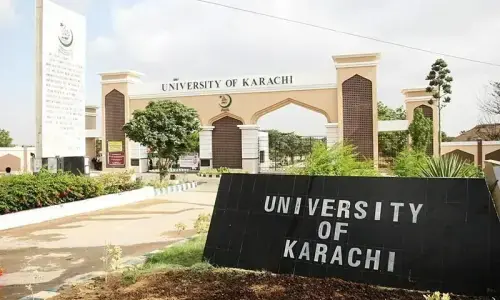KARACHI, April 19: A Sindh wildlife official claimed on Tuesday that the population of blind Indus dolphin had shown a slight increase during the past few years in the Dolphin Reserve stretches between the Guddu and Sukkur barrages.
Talking to Dawn from Shah Belo, roughly 500 kolimetres from Karachi, the Sukkur wildlife deputy conservator, Ghulam Mohammad Gaddani, who is heading a study to count the blind Indus dolphins, said that during the last count conducted by the Sindh Wildlife Department (SWD) in 2006 the number of the Indus dolphins in the reserve was around 810, whereas till today (Tuesday) over 916 dolphins had been counted between Guddu and Shah Belo.
He said that still one sector, which is around 15 kilometres long from Shah Belo and Sukkur, was left and between three and five big dolphin schools were located in the area and he expected that the population of dolphins in these schools would be around 100, increasing the total number of the blind dolphins above 1,000.
He said that Dr Najam Khursheed, a former regional head of the Ramsar Convention Secretariat — the highest international body that looks after and tries to protect the wetlands globally — along with a team of scientists was helping the SWD in conducting this study.
He said that the SWD team that was travelling in two boats would complete the last portion of the dolphin reserve and most probably would reach Sukkur on Wednesday evening.
He said that the study had also been conducted in the Sukkur and Kotri barrages stretch, which is not part of the dolphin reserve, and during the 10-day trip that started at Sukkur on March 1 and concluded on March 10 at Kotri 32 dolphins were counted.
He said during the 2006 study 11 dolphins had been counted in this section. However, all of these had died in the past couple of years (2008 – 2009) owing to less water in the Indus.
These new 32 dolphins that had been sighted there had most probably strayed there during the recent high floods when the Sukkur barrage gates were opened.
Mr Gaddani said that earlier the study, which was being conducted under a three-year Indus Blind Dolphin Conservation Project, was to begin in March from Guddu to Sukkur and then further downstream to Kotri but owing to a breakdown of law and order in the Guddu-Sukkur stretch it was postponed and first the Sukkur-Kotri section was studied.
With peace finally restored to this section, the study was started on April 16 and would be concluded on Wednesday evening, he added.
Responding to Dawn queries, Dr Khursheed said that during the study various scientists in his team had been collecting samples of water, etc, and recording the findings/results with proper coordination so that a clear picture emerged regarding the level of pollution and other manmade or natural factors that were affecting the survival of this rare mammal.
He said that it could take around a month before a complete report regarding the status of the dolphins, the habitat, etc, could be prepared and submitted to the department.
The blind Indus dolphins are different from their cousins living in the sea who have eyes and can see, as owing to highly muddy water of the Indus River, in which they have been living for thousands of years, they have lost their eyesight, but through the evolution, their sensory system had developed a great deal and now they can navigate and catch small fish, etc, without any difficulty.
Earlier the entire stretch of the Indus River from Attock to delta used to be the habitat of dolphins, but owing to the construction of various manmade structures to manipulate river water its habitat had shrunk and most of its population was found in the Taunsa and Sukkur barrages, with majority of the population living in the stretch between Guddu and Sukkur barrages.
The number of dolphins upstream Taunsa and downstream Sukkur had remained very limited and comprised only those which had strayed there either swimming upstream from Taunsa or downstream from Sukkur, where owing to a lack of awareness among the fishermen, etc, very little protection was available.
As the Indus dolphin was a mammal it had to come out of water to breathe air every few minutes and it could easily drown when it is caught in the fishing nets. Its numbers had dwindled to very low owing to unchecked fishing activities and discharge of untreated effluents from numerous industrial units that had sprung up along the Indus coast and which very conveniently put their chemical and deadly substances infested and untreated wastewaters into drains/nullahs, etc, which eventually emptied in the Indus subsequently contaminating its water.
Keeping in view the precarious condition and the threats being faced by the blind Indus dolphin, the provincial government had declared the Indus River stretch between Guddu and Sukkur barrages as Dolphin Reserve where fishing activities had been banned so that the dolphin population could survive.
The slight increase in the dolphins’ number indicated that the population had become stable, but it had not increased as much as it should have though it was living in a protected area.

































